The History
The conventional process of hand block printing on textiles and papers, with beautiful natural colors, has been practiced for around 2000 years although it didn't reach Indian subcontinent until 15th century. According to Wikipedia the traces of wood block printing (or simply, "block printing") were first found in China which go back to the 7th century. It remained the most common East Asian technique of printing until the 19th century.

In present day, most European hand block printing method involves use of wood cut to print patterns on the fabric and paper. These wood cut shapes (made with the help of laser cut machines and computers) are different from the hand carved wooden stamps produced mainly in the 15th century India (as the traces of history suggest).
In India, hand block printing was introduced to the Jaipur region of Rajasthan by the Chhipa community. Chippas are originally located in Bagru Village, an area now famous for its vegetable dye and mud resist ("dabu") block prints. Although there is a lot more to learn about the Chippas of Bagru, let's save that story for another post!
The art of hand block printing is passed down from generation to generation among these families of printers. With the help of fair trade organisations in India and in other countries, the small businesses who take pride in selling handmade products, the kids in these families have received good formal education and they're helping their families to run the textile business more efficiently. Indian and foreign patrons have passionately supported the culture and business around block printing. A big enabler is the Internet and mobile telephony penetration in India.
It must be mentioned that there is a constant churn in the communities as the aspirations of the the artisan families change over time. Many have chosen to pursue more established line of work in modern industries which provide much more stable income. Some have fallen apart in the past due to lack of funds and orders on a constant basis. With the current euphoria around organic cotton fabrics and apparel, things can only go north from here.
The Process
Carving the Block
A pattern is first hand-drawn or computer/tablet drawn, then printed on a paper after which it is transferred to the tracing paper. A piece of Sheesham (North Indian Rosewood) is painted with white chalk, so when the pattern is traced on the wood piece, it can be seen clearly, which makes the job of a wood carver easier. 
Once transferred on the wood piece, the pattern is ready to be carved. The big parts of the wood are carved with the machine while the smaller or more intricate parts are carved with the help of small chisels and other hand tools.

Preparing the Table
The table for industrial wood block printing is either 6 meters or 10 meters long. 6 meters table is used for sari printing and for other purposes while 10 meters table is used to fabric printing. Standard width of the table is 50". It is because most fabrics in India are 44" to 50" wide.
There are extra wide fabrics (58") too but for printing them, a wider table is required. Some printing units keep that kind of setup ready but it is rarely used because it isn't much in demand. DesiCrafts has facility to print both, standard width and extra wide fabrics.
The table has at least 10 layers of jute fabric, above which there is a layer of a blanket, topping it off with a thick cotton sheet that is usually white in color. The sheet is tightly tucked in from all sides just like a beautifully made bed.
Color Mixing and Preparing the Dyes
Once the wooden stamps are ready to print, an expert hand block printer (generally called "The Master") mixes the basic colors to obtain the desired complex color for final printing.
Preparing the Printing Tray
The printing tray is a multi-story tray made of wood. It is similar to the wheeled-tray that a hotel room service strolls around to serve breakfast. Block Printing table also has wheels on it for easy movement and carrying it from one side of the long table to the other.
The first tray is to keep the color paste which is spread on a fabric made with marino wool. Marino wool basket weave fabric is the best suited for spreading the color paste on it. The second tray is for keeping the wooden blocks as block printers use multiple blocks in cycles when making a pattern on a fabric.
The third and the lowest tray is used for keeping the rags and brushes to clean the spills etc from time to time.
Printing
Depending on the number of colors, more than one block is required for printing. These blocks have names. The outline blocks are called Rekh and the filler blocks are called Dutta.
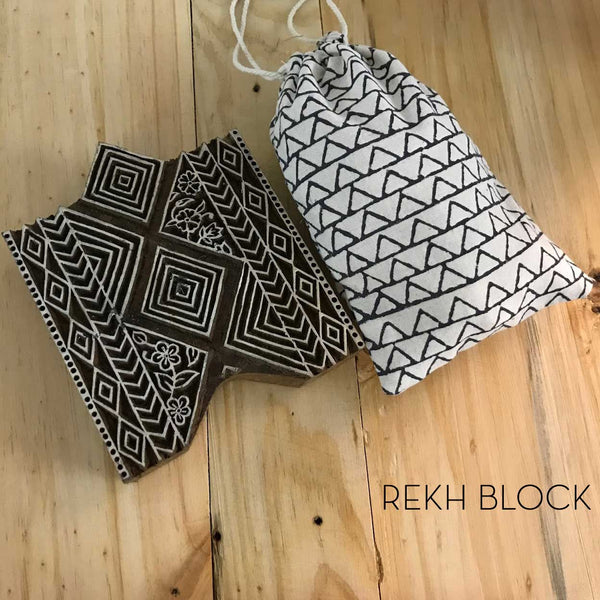
The fabric which has more filler color and less outlines is called a Gadd print fabric. It requires more color than usual and may be a costlier affair than the standard printing.
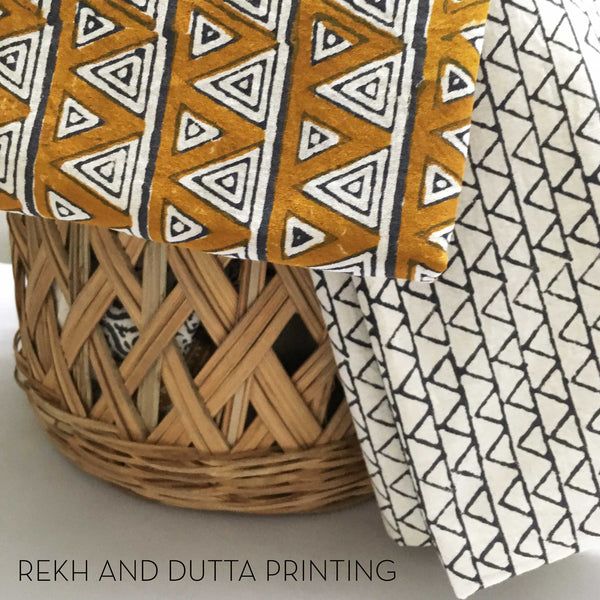
First the outlines are printed and then the filling is done. More than one printer works parallelly on the fabric to achieve multi-color printing.
Washing and Processing the Fabric
Once the fabric is printed, it is dried in shade. It's not sent for washing until it is completely dry. Once dried, it is sent to the washers, who exclusively engage in post processing of printed fabrics.

The washing is multi-stage process. During which the fabric loses the extra color. Washing makes them softer and ready to use for making garments and other products.
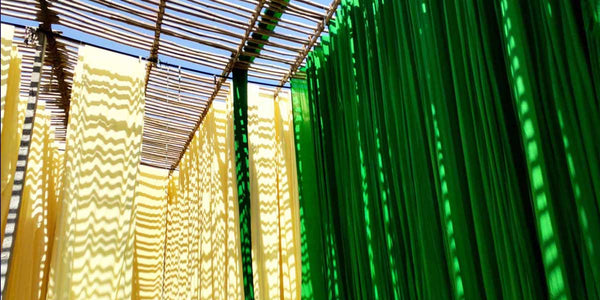
DesiCrafts Fusion Patterns
At DesiCrafts, there is a lot of back and forth between our block makers and printers to design and achieve just the right outcome. Sometimes, our tailors would also pitch in on the placement of the patterns. This can be as exhausting as exciting, but in the end, always fulfilling! Sometimes, the results won't come out right and we redo the whole process again until we have the setup to get the desired prints without much ad-hoc interventions needed in the subsequent processes.
Things become even more interesting in the case of fusion patterns. They are a mix of traditional Indian patterns, inspired by western and European prints. Have a look at DesiCrafts Scandinavian wooden stamps here.

DesiCrafts works with Bagru's Chippa printers and wood block carvers to offer you vegetable dyed fabrics such as Indigo and Madder prints. We also work with Sanganeri Printers of Rajasthan to offer more colorful range of fabrics.
Apart from this, we have an attached printing unit where we print the fabrics, sarees, carpets, table runners and cushion covers etc. DesiCrafts also has an on-demand dyeing facility through which we're able to dye the fabrics in different colors as per the client's requirements.
We hope this article helps you in understanding and deciding on how to go about your dream hand-printed fabrics and handmade goods made from them, whether you get it made from us or elsewhere. We'd be glad to respond to any queries or suggestions!
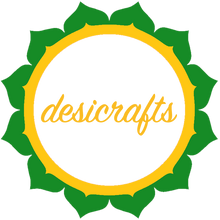
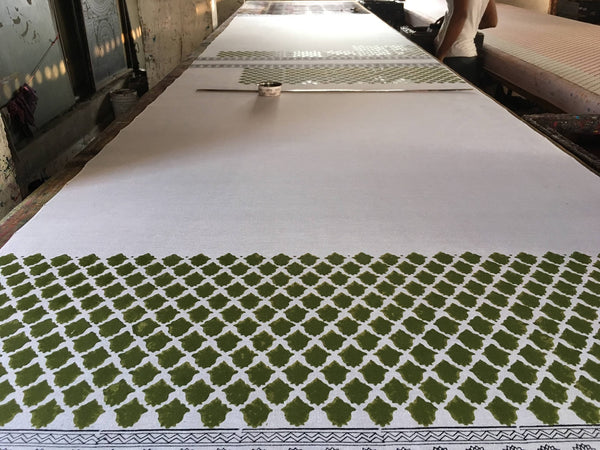
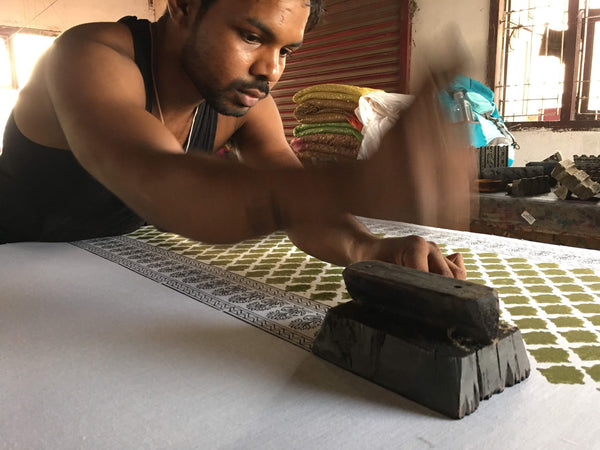
Comments
Can you play order sir
I haven’t read such a descriptive post on the block printing process earlier. Thank you for sharing this lovely post.